Harnessing Humate Synergy - The FulvX™ Breakthrough
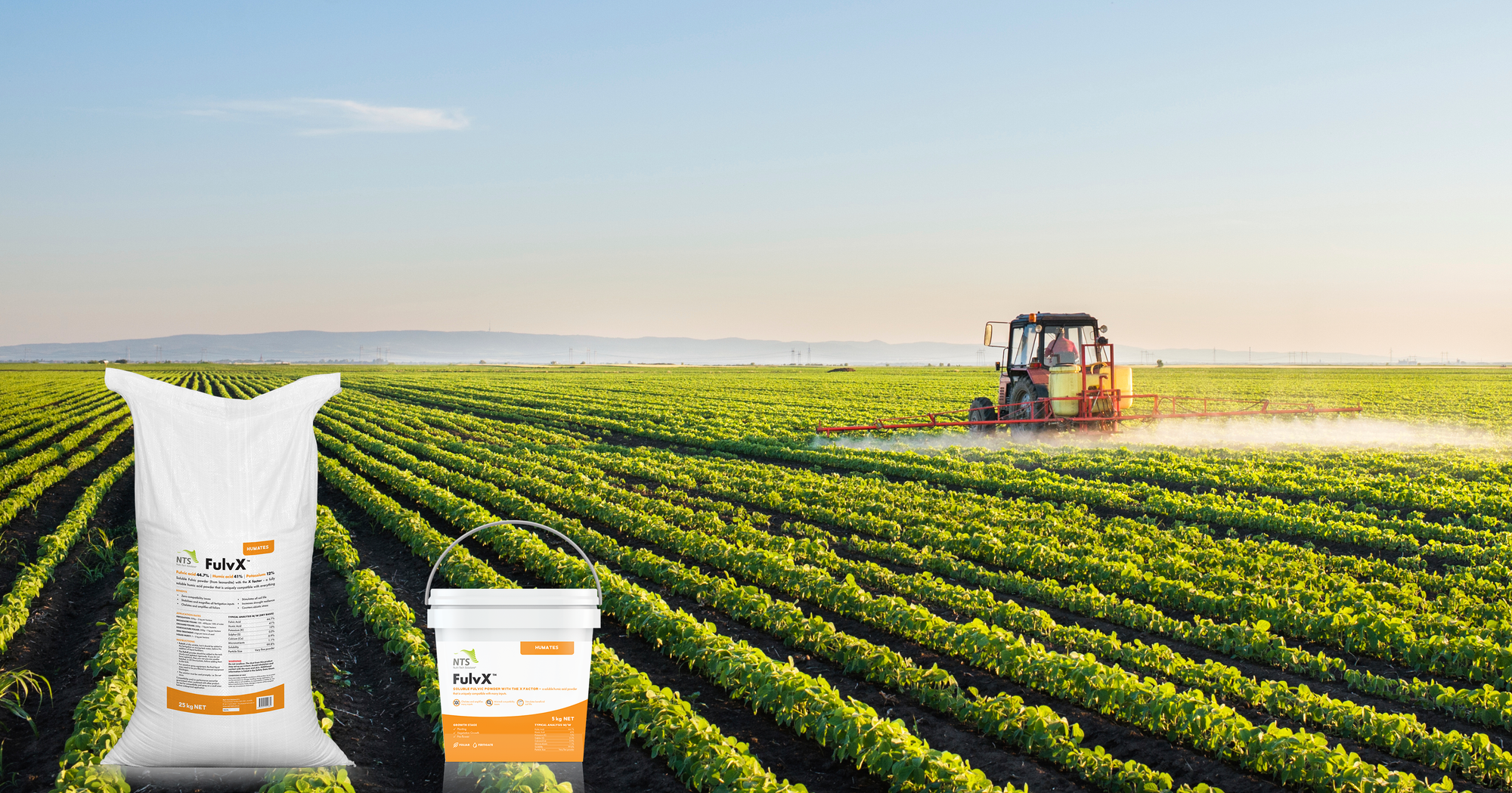
Whatever our farming model, on the continuum between organic and industrial/extractive, the vast majority of food producers would have a similar response when asked one question. That question is, “Would you like to be more sustainable and more profitable while also building your soil health and crop resilience.” We all want that holy grail, but the pressure of meeting bottom lines amidst increasing climate extremes and fickle commodity prices often leads to flawed decisions and an understandable risk aversion. It often becomes a case of “better the devil you know” when contemplating change or a step into the unknown.
Well, what if there was an input that addresses all four parameters of that key question without draining your bank account? In fact, it can be cost-neutral if managed correctly. I’m talking here about humates, and if you have yet to discover their potential, you are in for an exciting ride.
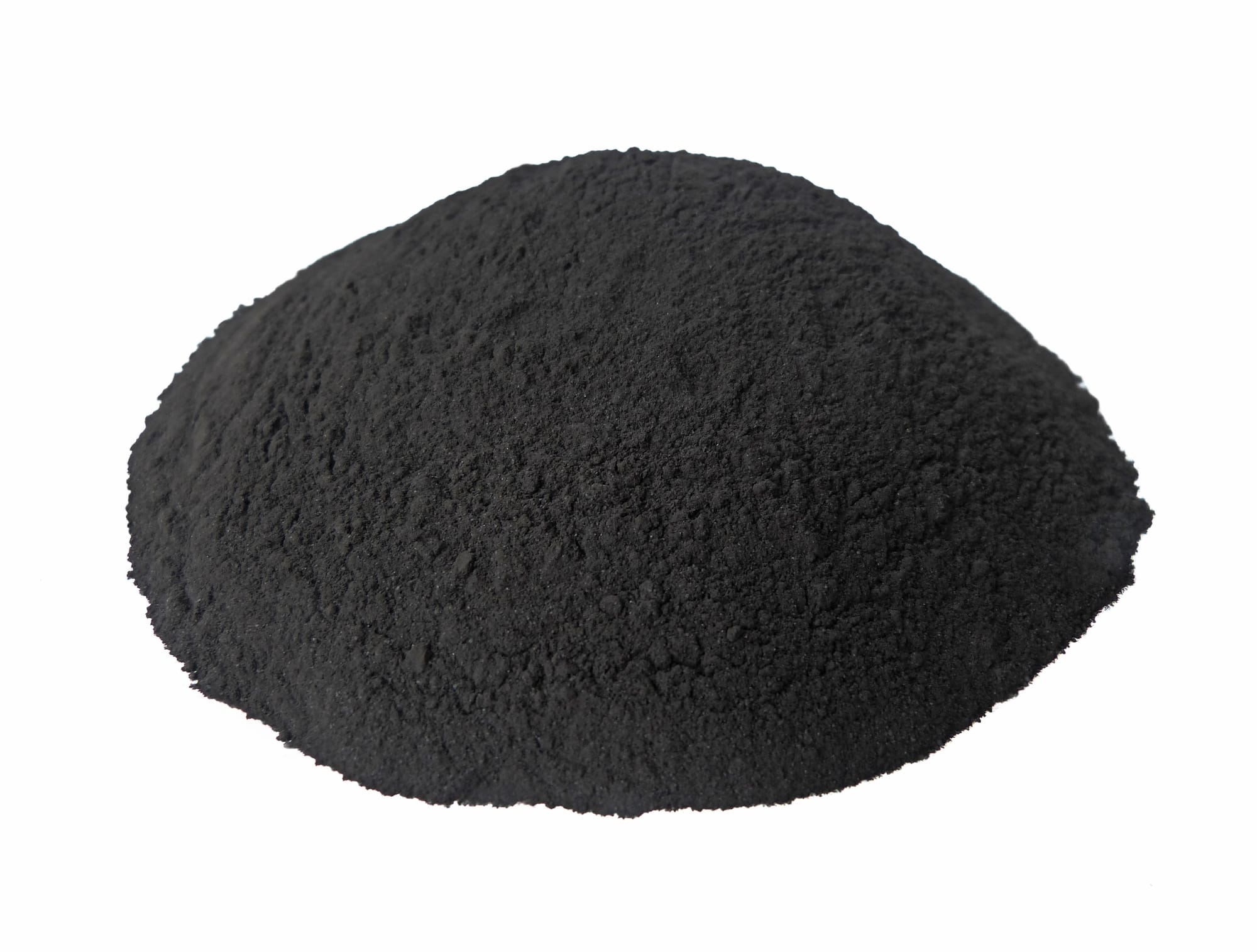
What are humates
Let’s begin by explaining these natural materials. Humates is an umbrella term to describe two organic acids called humic and fulvic acid. These natural substances are found in compost and soil humus but can be extracted in much higher concentrations from ancient organic matter in the form of brown coals. When you analyse their multiple benefits, it becomes abundantly clear that they are delivering similar benefits to organic matter (humus) in the soil. In fact, in many cases, that can serve as a bandaid to counter the serious depletion of humus in most of our farming soils (a loss of 2/3 of our organic matter in the last ten decades)
These benefits include water and nutrient retention, soil structure improvement, biostimulation, infiltration, detoxification (serving as a carbon filter), crop resilience and plant growth promotion, to name a few.
However, before we begin to describe the mechanics of these terrific twins, I had best justify my earlier comment about how they can be embraced free-of-charge, in your farming operation. This lofty claim relates to a phenomenon called cell sensitization, stimulated by both humic and fulvic acid.
Cell sensitization refers to a scenario where the cell membrane, through which nutrients move into the cell, becomes more permeable. In fact, the research demonstrates a 30% to 34% increase in nutrient uptake associated with this enhanced penetration.
Herein lies the secret of cost neutrality. If you accept that you have increased plant uptake by one-third, it is clear that there is an opportunity for cost saving. The starting point is to reduce your fertilisers or farm chemicals by the cost of the humate inclusion. That will typically amount to $15 or $20 per hectare. If you keep an untreated control, you will soon see that the humate-treated area(with slightly less fertiliser) consistently outperforms the control that has received more fertiliser. This is not an idle claim. I do this on my own farms, and thousands of Nutrition Farmers across the globe have also recognised this potential. Let’s look at some of the science.
There are multiple sources of humate research, but an excellent summary can be found in a peer-reviewed paper published on Intechopen in 2021. This paper, entitled “Humic Substances: Prospects for Use in Agriculture and Medicine,” was authored by Priya Goel and Mardhu Dhingra. Google this, and you will get excited, particularly when you review the potential of fulvic acid for protection from cancer and viruses.
This increased membrane permeability has been described in multiple studies.
For example, cell sensitisation was described in a study by Cimrin et al., which demonstrated increased P uptake in lettuces.
Celia, et al demonstrated higher mineral uptake in maize grown in calcareous soils. Here, the humate addition effectively countered the calcium antagonism that negatively impacts the uptake of seven minerals in high-calcium, high-pH soils.
Khaled and Fawry found similar increased nutrient uptake with humate-treated crops in saline soils. Their study was published in the journal Soil and Water Research.
Finally, a study titled “ Effects of humic substances on plant growth and mineral uptake of wheat” by Asik et al. reported impressive increases in mineral uptake following humate treatment.

How Free-of-charge might work
Returning to the proposal that we can utilise humates free of charge.
Let’s look at how cost-neutral might look using a broadacre scenario.
Here are three strategies that demonstrate the potential
1) Combining 5% Soluble Humate Granules with DAP/MAP - if you were buying DAP in bulk, you would be paying around $900 per tonne in Australia. If you were applying 150 kgs per hectare, for example, that would cost you $135 per hectare. 7.5 kgs (5%) of Soluble Humate Granules would involve an investment of around $23 in Australia. In this instance, you could reduce your DAP input by 25 kgs to cover the Humate investment and effectively neutralise that cost. In fact, there can be a net gain here because your remaining 125 kgs of DAP can perform 33% more efficiently before considering the many other benefits of the humate inclusion.
There are several other things happening when you combine humates and DAP/MAP. The most important of these involves the formation of a phosphate humate, where you have effectively stabilised your phosphate investment. It is widely acknowledged that your crop will access just one-third of applied phosphate before the P locks up with calcium, iron or manganese to become part of your frozen reserve. This typically happens within six weeks of application, but it’s more rapid in iron-rich, red soils. When phosphate binds with humic acid, you have reduced this lockup potential and gained more P longevity. This is really important because your crop actually requires twice the P requirement post-flowering (the business end of the season), compared to the early vegetative phase.
There is also a well-researched link between the decimation of mycorrhizal fungi and the sizzling power of phosphoric acid once the acid phosphates have ionised (broken their N link) in the soil. Carbon-rich humic acid can buffer this damage while also stimulating the mycorrhizal symbionts we all need. In fact, humic acid is amongst the most powerful of mycorrhizal stimulants.
2) The combination of fulvic acid with herbicides - the increased uptake (cell sensitization) means we can safely reduce herbicide requirements by 30% (which more than covers the fulvic investment), while also speeding the biodegradation of herbicide residues in the soil. Thousands of growers globally now utilise this strategy to reduce chemical requirements, while also reducing soil compromising residues. The typical application rate for the fulvic inclusion is 100 grams of Soluble Fulvic Acid powder per hectare.
3) Combining urea with humic acid - this creates a stable urea humate, which magnifies urea performance and increases stability. There is less leaching and volatisation. When humic acid is combined with foliar urea there is also less potential for burn, at higher rates of N concentration I.e 15 kgs of urea in 100 litres of water), due to the buffering capacity of humic acid.

Beating compatibility dramas
I have discussed the exciting potential of humates in previous blogs and podcasts, but here, the focus will be a little different because we will consider the unique benefits of combining humic and fulvic acid and explore the potential of harnessing this humate synergy.
This has often not been an option because of incompatibilities with other inputs, but there is now an option that allows this productive partnership in all scenarios. Later, we will discuss a new 50/50 blend of leonardite-based, soluble humic and fulvic acid powder called FulvX. Here, the X factor is an exciting new humic acid component involving a 100% soluble humic acid powder that is uniquely compatible with all inputs.
If you are wondering about the basis of potential compatibility issues, it might be a good time to explain the problem. Humic acid is a strange natural acid that is only soluble in alkaline conditions. For this reason, it is extracted from brown coal using the super alkaline, potassium hydroxide. As a result, liquid humic acid is called a potassium humate, because it remains bound to some of the potassium used in that extraction process.
Fulvic acid, by contrast, is soluble in alkaline or acidic conditions. This makes fulvic acid much more versatile and user-friendly on the farm. Remember, we are always wanting to combine something else with either humate to take advantage of the enhanced uptake feature (cell sensitisation). The majority of fertilisers are acidic, as they are based upon nitric, sulphuric or phosphoric acid. This makes them incompatible with humic acid because it causes this humate to drop out of the solution. You will then have a tank full of vegemite. I promise you that shovelling that black gunk out of the spray tank or fertigation tank does not bring smiles to many faces.
You may well be thinking,“Why worry about the humic option, let’s boost everything with fulvic,”. However this is not ideal for several reasons that you will discover as we investigate the other differences between these two organic acids. You will also soon understand their remarkable synergy if they can be combined. Let’s look at some of these differences, as they will help us recognise why the on-farm outcome, when combining this pair, is greater than the sum of the parts.
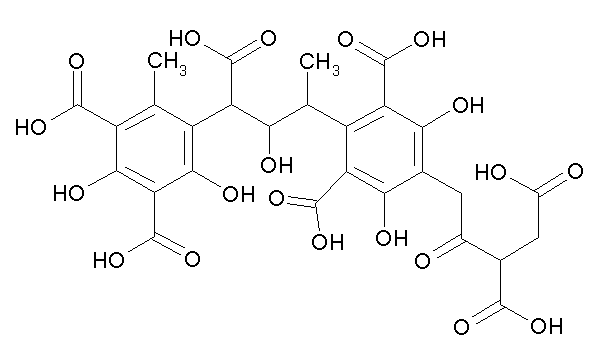
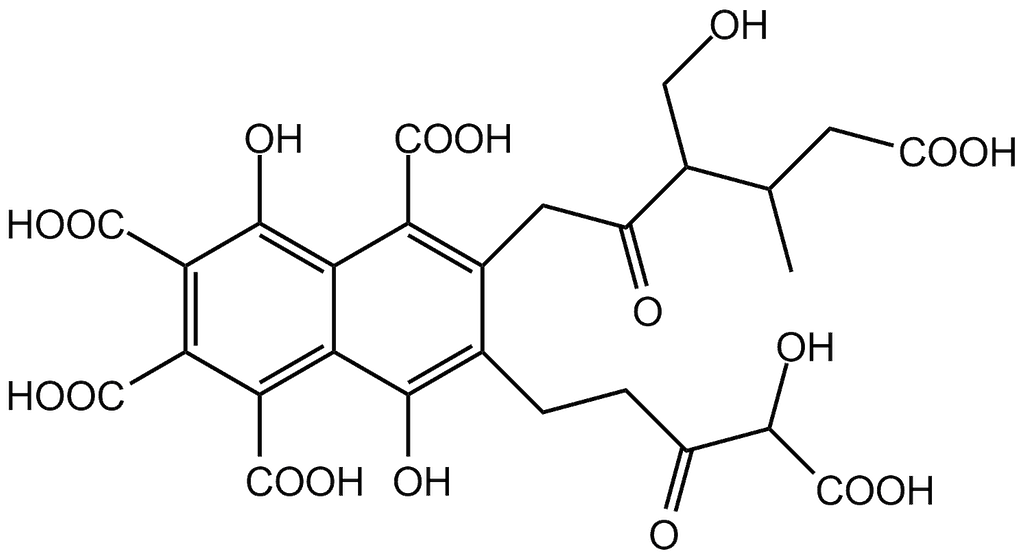
Humic VS Fulvic Molecular Structure
Humates - Discover the difference.
Humic Acid is ten times larger than fulvic acid and it has a more complex structure. This larger molecular size is a critically important difference because humic acid will not leach, even in sandy soils. That means you can complex highly leachable trace minerals, like boron in light soils, or unstable minerals like P in any soil and prevent their leaching or lockup.
CEC is a measure of the storage capacity of your soil. A sandy soil might have a CEC of just 5 because it lacks the clay and humus that gifts nutrient storage. Humus has a CEC of 250, but it is difficult to build organic matter in sand because it oxidises so readily with the easy inflow of oxygen into these light soils. Humic acid has a CEC of 450, and it doesn’t leach or easily oxidise! That makes it tailor-made for improved storage of both nutrients and moisture in light soils.
Fulvic acid has a crazy CEC of 1400, so it can dramatically absorb nutrients, but here’s the rub. The much smaller molecular weight of fulvic acid means that it can and does leach. This can be an advantage if we are using a higher dose of fulvic to help remove chemical residues from our soil (the Fulvic Flush) because it sucks up the residues and leaches them out of the root zone.
There is a second aspect in the detox capacity of the Fulvic Flush. Soil bacteria are tiny creatures (500,000 on a pinhead), and this multitude loves this smaller, simpler humate. In fact, fulvic acid is amongst the most powerful of all bacterial stimulants, and this is important when we are talking about the detox of chemical residues in the soil. Bacteria are responsible for most of the biodegradation of farm chemicals. When you have wrapped those chemicals in “the spoon full of sugar” (the fulvic package) the bacteria arrive like bees to a honeypot, and this can further fast-track the detox process. The Fulvic Flush involves 3 kgs of NTS Fulvic Acid Powder per hectare.
So, fulvic acid leaches and humic stays put, and the much more complex humic molecule, is a favoured food for beneficial fungi rather than bacteria. Many soils need more fungi, as they are collateral damage in heavily cultivated soils bombarded with fungicides and herbicides (both of which negatively impact the fungal component of your workforce). You can monitor the improvement of your all-important fungi-to-bacteria ratio with a Microbiometer following a humic acid application. Mushroom growers often struggle if they introduce humic acid into their programs because the profound fungal stimulation can mess up all their production schedules until they readjust.
So now we understand that humic acid is stable and it feeds fungi, while fulvic is a leachable, bacterial stimulant. Let’s look at some other similarities and differences. Let’s begin with the similar roles.
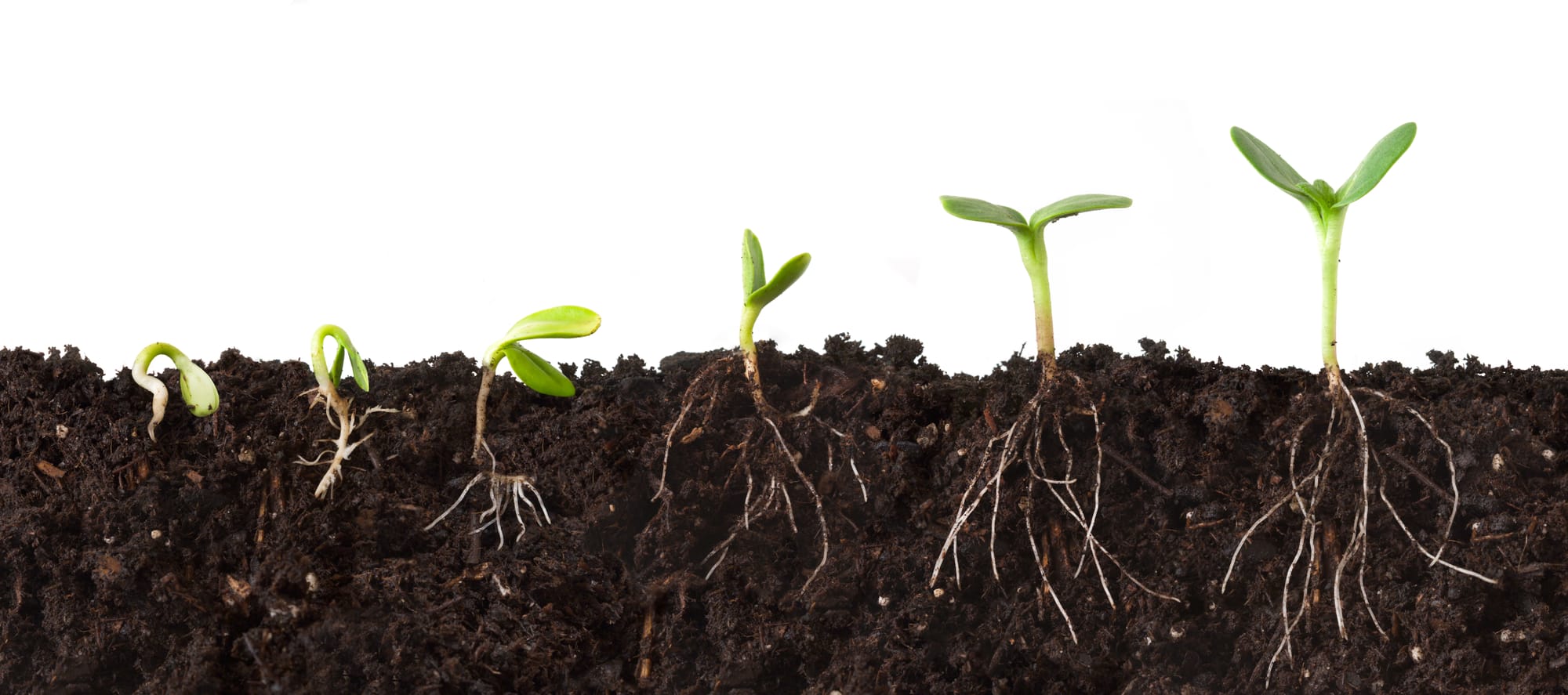
The Similarities - Uptake, Hormones, P-release and Stress Busting.
1) Chelation - Both humic acid and fulvic acid increase nutrient uptake via cell sensitisation, but they also enhance nutrient delivery through chelation. As we have discussed previously, chelation involves a biochemical or chemical (EDTA) claw that wraps around a cation and neutralises its positive charge. This reduces the likelihood of a traffic jam when a positively charged cation is drawn like a magnet to the stomates on the underside of a negatively charged plant surface. However, there is a serious problem with using humic acid as a chelating agent because it is incompatible with all things acidic. Sulphate-based trace minerals, calcium nitrate and clean sources of P and K, like MKP, could be wonderfully enhanced if they could be combined with the more cost-effective humic acid but until now, this has not been possible.
2) Hormone-like stimulation - Both humates are well documented to deliver a pronounced plant growth response that closely resembles the three key phytohormones driving many plant processes, auxins, cytokinins and gibberellins.
The auxin-like effect has been researched for over half a century. Here, we see the elongation of roots, increased root branching, and a greater root biomass. This is of particular importance relative to building soil humus because the root mass offers the greatest opportunity to build stable carbon from crop residues. The roots are positioned in the biological engine room, so their conversion to humus is much more efficient compared to the above-ground stubble, which lacks that important soil contact.
Cytokinin-like responses have been observed since the 1980s. Here, we are talking about more of a leaf response, where both humic and fulvic acid seem to trigger a movement of cytokinin from the roots to the shoots and leaves. This promotes a boost to photosynthesis and a greening response.
The gibberellin-like response can be quite profound and was first reported in the 1990s. In one published study, a combination of humic and fulvic acid was equivalent to the use of actual gibberellic acid in increasing the size of table grapes; The gibberellin-like effect also extends to impacts with breaking dormancy and fruit and flower development. Gibberellins, themselves, have also been isolated from some leonardite-based humates, so there is a double impact here.
3) Increased P availability - humic acid and fulvic acid have both been shown to increase the release of phosphate from locked-up sources. Water soluble phosphate is notoriously inefficient as a large percentage forms insoluble compounds with calcium and other minerals within weeks of application. Multiple studies report a marked increase of P levels in plant tissue following humate treatment. This relates to several of the multi-function roles of humates. Phosphate solubilising bacteria are stimulated, as are the beneficial fungi that release acid exudates to solubilise P. The extra root branching from the auxin-like effect also gives greater access to this super immobile phosphate mineral. Phosphate is mobile within the plant but really immobile in the soil. It sits where it is put, and plant roots must seek and scavenge this important player.
4) Abiotic stress tolerance - in a warming world where environmental extremes abound, there is no shortage of plant stress, and anything that can help counter this stress becomes an important tool. During drought, heatwaves and other stress situations, plant damage is driven by free radical damage from reactive oxygen species (ROS). Antioxidants douse these free radical flames, and they can include enzymatic and non-enzymatic antioxidants. The enzymatic antioxidants include substances like superoxide dismutase (SOD), catalase, and peroxidases. The non-enzymic antioxidants include things like phenolic compounds, Vitamin C and Vitamin E. Multiple studies have reported the elevation of both enzymic and non-enzymic antioxidants following treatment with humates.
Understanding the differences.
Nutrient stability - highly leachable anions like boron and sulphur can’t be chelated. However, they can be complexed. When boron, for example, complexes with humic acid, a stable boron humate is formed that cannot leach. You have just stabilised and magnified a critically important trace mineral. Nitrate nitrogen is another highly leachable major mineral that can be stabilised and stored within the 450 CEC humic molecule. Humic acid in sandy soils is a Godsend, as this non-leachable magnet holds on to many minerals that would otherwise store poorly in a soil lacking clay and humus. Humic acid also retains several times its own weight in water.
80% of soils are lacking molybdenum. This N trigger is only required in tiny amounts, but it is another highly leachable anion. It is wonderfully productive to combine molybdenum with humic acid to retain it in the root zone.
So, humic acid stabilises minerals, but fulvic doesn’t. Fulvic acid will magnify mineral uptake but it does not persist in the root zone, like humic. When we combine this productive pair, we get the best out of both worlds.
Horses for courses are important. For example, humic acid should not be used to magnify glyphosate response. Even though it can increase membrane permeability to reduce herbicide requirements, it’s kind of like giving with one hand and taking with another because glyphosate works best at a pH of just 2.9. Humic acid typically has a pH of 11, so this alkalinity can compromise the performance of glyphosate.
Humic acid also has more impact on improving gas exchange. You have heard me talk before about the management of gas exchange as a principal role of a successful Nutrition Farmer. We are talking about the primacy of oxygen, the single most important element involved in plant, microbe and animal health. We are also talking about the release of CO2, following the utilisation of oxygen by the roots and surrounding soil life. It is all about how well the soil breathes, and the better the breathing capacity, the healthier the ecosystem involved. In this context, a high-magnesium soil, lacking humus and beneficial fungi, is like a dying animal struggling for breath.
Humic acid has a proven ability to form stable complexes with soil particles to improve soil aggregation, aeration, and water retention. This is particularly beneficial in sandy soils, which often suffer from poor water retention and nutrient leaching. This promotion of crumb structure also has a biological link because beneficial fungi, stimulated by humic acid, are the creatures responsible for bonding together the larger aggregates that are the basis of crumb structure.
Fulvic acid, on the other hand, enhances bacterial activity and nutrient cycling, ensuring that the soil remains fertile and productive.

Best of both worlds
Okay, let’s look at what we can achieve if we combine these two natural acids while retaining the versatility associated with fulvic acid. Let’s look at an exciting new NTS product called FulvX, which delivers the best of both worlds without compromising the versatility and compatibility typically associated with fulvic acid.
There is substantial research highlighting the productive humate synergy that can achieved when both acids are combined. Let’s look at some of these benefits:
1) Water retention and drought resistance - this is an important outcome when water is increasingly described as “the new gold”. Any tools to boast water use efficiency should be considered. Humic acid can increase water infiltration due to the physical and biological enhancement of crumb structure. Fulvic acid also has both a physical and biological impact. It increases bacterial biomass, which provides for greater production of the moisture-retaining, water crystal-like effect of the mucilaginous substance that bacteria produce in the root zone. Fulvic acid has also been shown to increase the plant's uptake of moisture due to a more rapid impact on cell membrane permeability. Together, these capacities can significantly enhance drought resilience. In one study involving tomatoes treated with a combination of humic and fulvic acid, the treated plants maintained higher water content, exhibited less wilting, and produced higher yields under water-stressed conditions.
2) Plant growth enhancement - the hormonal punch previously described, in conjunction with the impact of both acids on soil biology, enhances growth and productivity. Humic-energised fungi, like AMF and Trichoderma, provide a further PGP response, while fulvic-activated bacteria, like bacillus and azotobacter strains, fix nitrogen and solubilise phosphate, which drives further productivity. A study conducted on maize crops showed that the combined application of humic and fulvic acids resulted in a significant increase in grain yield compared to untreated controls. The treated plants exhibited better root development, higher nutrient uptake, and improved stress tolerance.
3) Root growth stimulation - the better the root development, the better the humus building potential, and humus is the essence of productive soil fertility. As mentioned earlier, the roots are engulfed in a microbial hothouse where decomposition and associated humus creation are inevitable (unless you have butchered your workforce). Humic and fulvic acid work differently relative to root growth stimulation, but together, they are a root-promoting powerhouse. Auxins are the hormone most linked to root growth. I have previously described the impact of the root architects, protozoa when singing the praises of a lucerne-based protozoa tea. It is, more specifically, an amoeba that is responsible for the outpouring of auxins that generate such impressive root branching (especially in grasses and cereal crops). I have mentioned an auxin-like effect associated with both humates, but there is another important phenomenon contributing to the root-enhancing impact of humates. Humic acid binds to auxins and prevents their decomposition. This effectively extends their root-enhancing life span. In this instance, humic acid, combined with a protozoa tea, is a very productive strategy
Fulvic acid contributes in other ways. A study conducted by Nicola Capstaff et al. and published in the Journal of Experimental Botany revealed the root impact of fulvic acid on forage legumes. The fulvic acid produced a marked increase in Rhizobium growth, and root nodulation was also stimulated. When attempting to explain this result, the researchers noted up-regulation of many important early nodulation signalling genes, after only 3 days.
The improvement in soil structure and increased nutrient uptake, linked to humic and fulvic acids, further boosts root expansion.
In short, the synergistic effect of humic and fulvic acids, when combined in a single formula, can outperform either of these natural substances when supplied alone. Many potato growers have discovered this synergy, but that typically involves using standalone humate products together.
The main reason there are so few humic/ fulvic combos largely relates to the loss of versatility when humic is combined with fulvic. Fulvic acid is compatible with almost everything, but humic acid is traditionally incompatible with all acidic inputs, which is almost everything. Here lies the magic of FulvX.
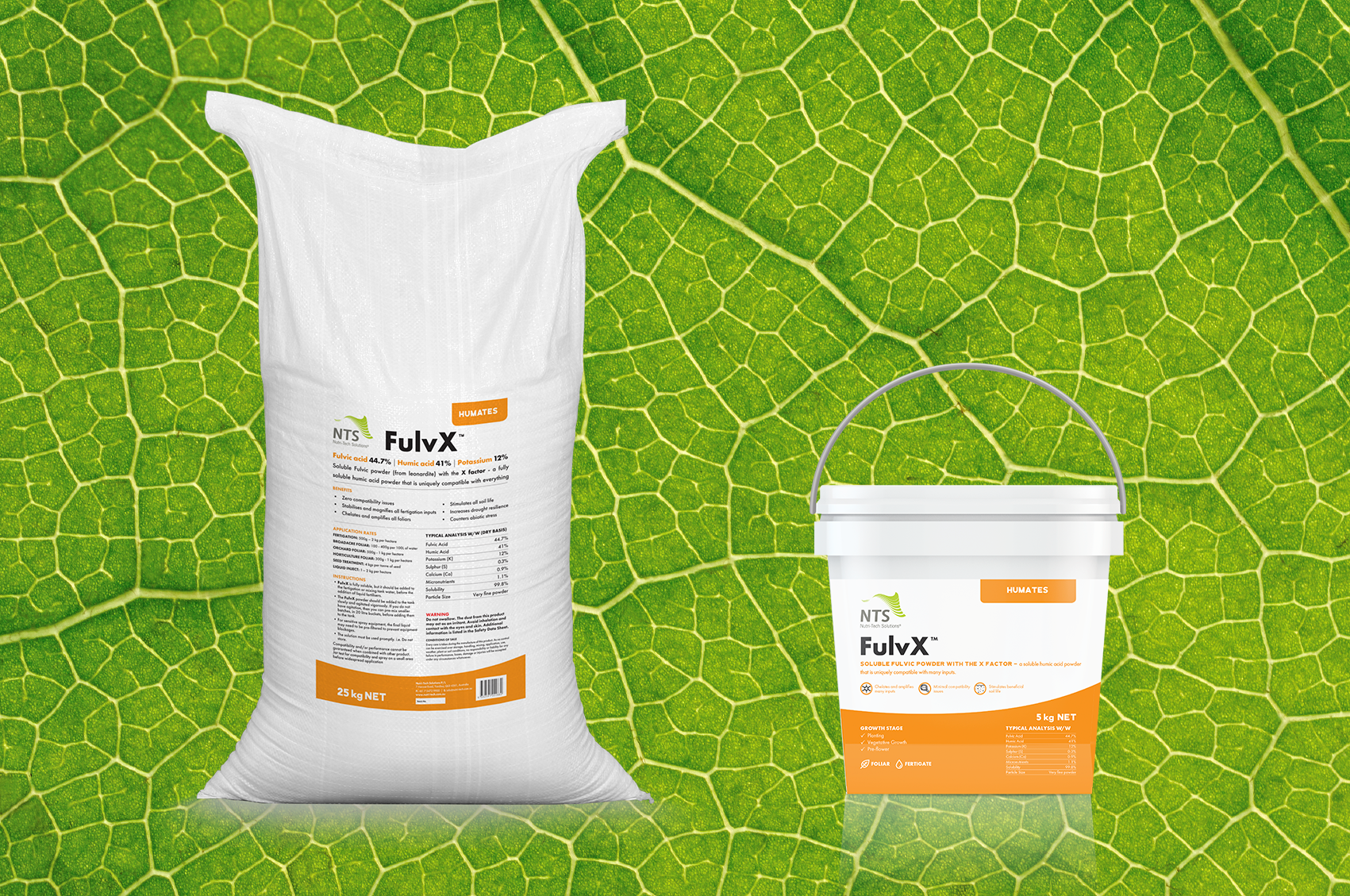
FulvX - the perfect partnership
The great claim to fame for the new FulvX product from NTS is that we have found a way to make humic acid compatible with all inputs. This exciting new formula involves 47% fulvic acid, 41% humic acid, and 12% potassium. It is fully soluble and completely versatile.
It is the perfect additive for fertigation to stabilise and magnify all fertiliser inputs. It can be used with phosphate, sulphate or nitrate-based inputs, in liquid inject, or as foliars. It is wonderful as a seed dressing, at the rate of 4 kgs per tonne, or as a standalone biostimulant, using as little as 1 kg per hectare. Feel free to check out FulvX at www.nutri-tech.com.au.
Okay, that wraps up our little journey into the vast range of benefits linked to humates. Hopefully, you are now inspired to experiment with these inputs on your farm. A good starting point is the inclusion of Soluble Humate granules at the rate of 5% with your granular fertilisers. Just treat half a paddock and compare the difference. I promise you will quickly become a Humate convert.
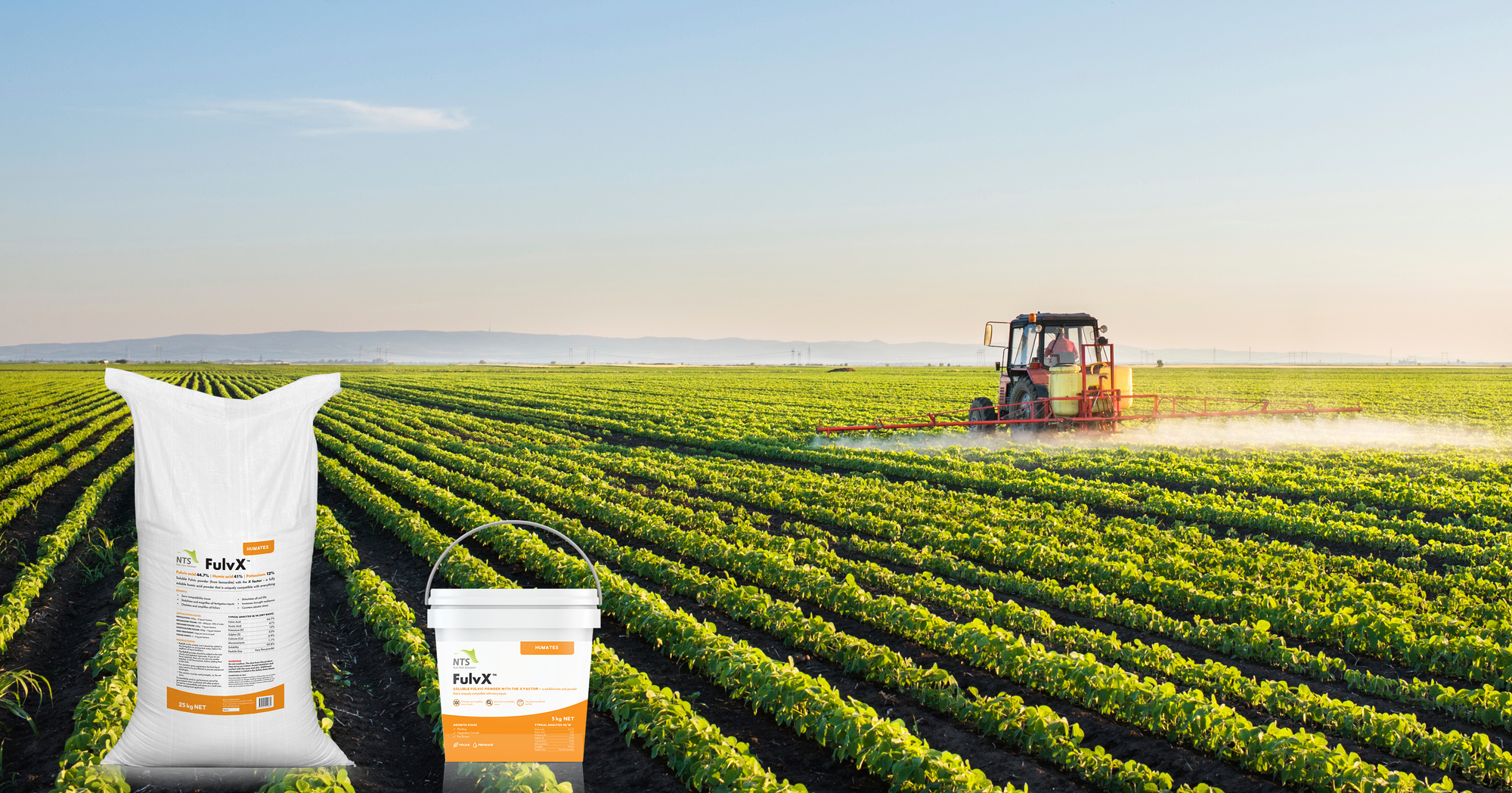
Top Ten Benefits of FulvX
1) No compatibility issues - Finally, there is a humic/fulvic option that is compatible with all other fertiliser inputs. You can now stabilise and magnify everything, to increase performance and reduce your input costs.
2) Complete biostimulation - Humic feeds fungi and protozoa, while fulvic boosts bacteria. FulvX supports the major players in your below ground workforce.
3) Soil detoxification - Humic and fulvic acid, combined, have become the EPA-favoured soil remedial agents to counter heavy metals or chemical contamination.
4) DIY Chelation - Humic and Fulvic together are powerful natural chelating agents. Farmers can now add a little FulvX to any trace minerals or major cations to create superproductive chelates like calcium humates, zinc humates or copper humates.
5) Stabilising and releasing P - Humic acid can complex unstable phosphate inputs like DAP/MAP while fulvic acid can release locked up phosphate, and magnify uptake of both your applied P, and the phosphate released from frozen reserves.
6) Hormone-like plant growth stimulation - Humic and fulvic acids have a plant impact similar to that provided by the key plant hormones - auxins, cytokinins and gibberellins. There is enhanced root mass (auxins), improved photosynthesis (cytokinins) and better flowering and fruit size (gibberellins).
7) Drought resistance - humic acid boosts crumb structure and infiltration, while fulvic acid improves moisture uptake by the plant. Fulvic acid also boosts the bacteria that produce water crystal-like exudates in the root zone. These substances hold several times their own weight in water.
8) Stress resistance - both humates can counter abiotic stress through stimulating plant production of antioxidants. These protectors neutralize the free radical producing reactive oxygen species (ROS) that do the damage during stress.
9) Inexpensive, super productive seed treatment - FulvX can be used as a highly effective seed treatment at just 4 kgs per tonne of seed. This equates to a cost of less than $2 per hectare for increased germination and an impressive kickstart to your crop.
10) Yield building potential - FulvX provides a major impact on soil biology, which enhances growth and productivity. Humic-energised fungi, like AMF and Trichoderma, provide a marked PGP response. Fulvic-activated bacteria, like bacillus and azotobacter strains, drive further productivity gains by fixing nitrogen and solubilising phosphate, while pumping out biochemicals that promote plant growth.
Want to trial the benefits of NTS FulvX™
You can place your order online below, email sales@nutri-tech.com.au or phone on 07 5472 9900.

